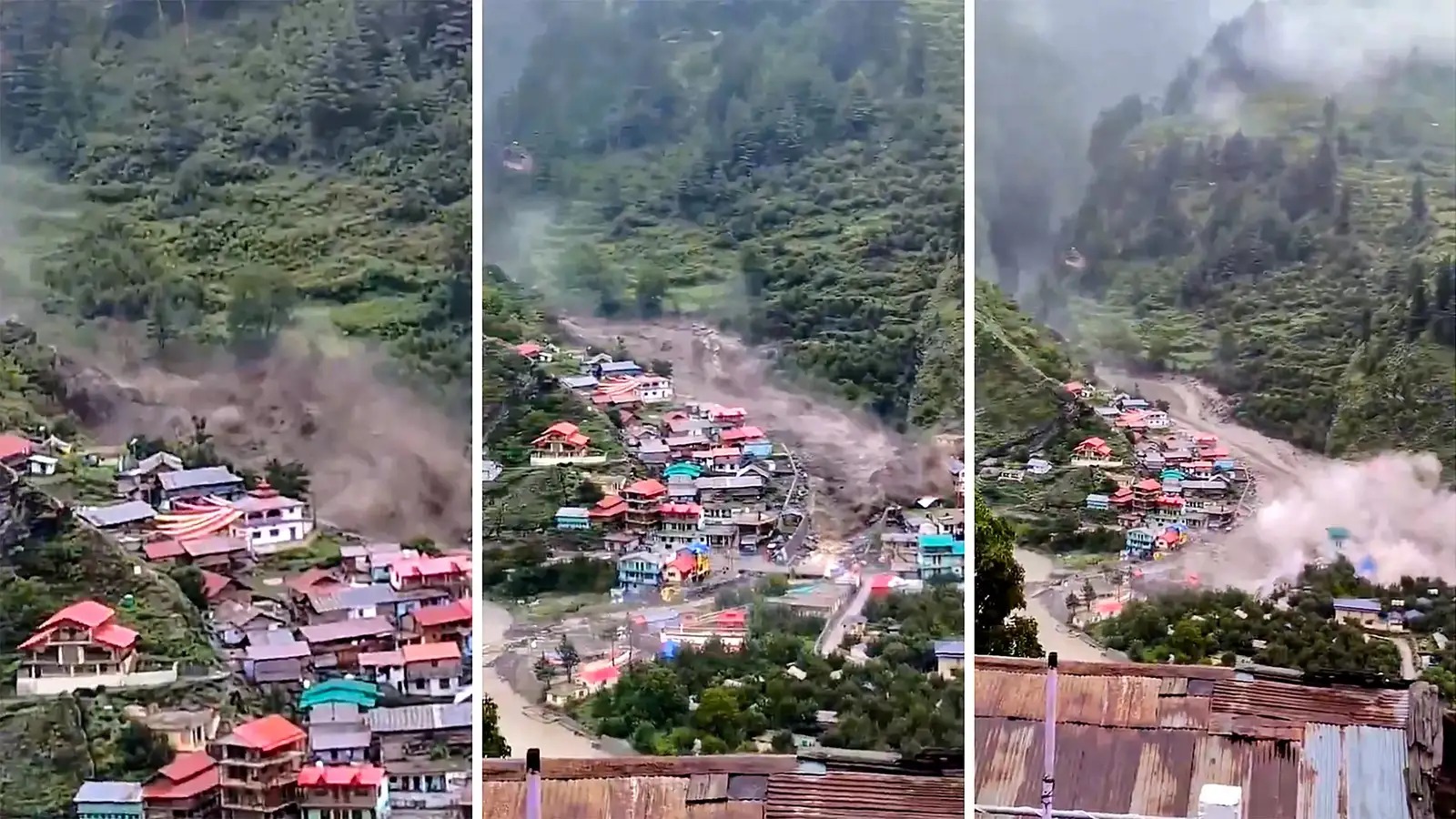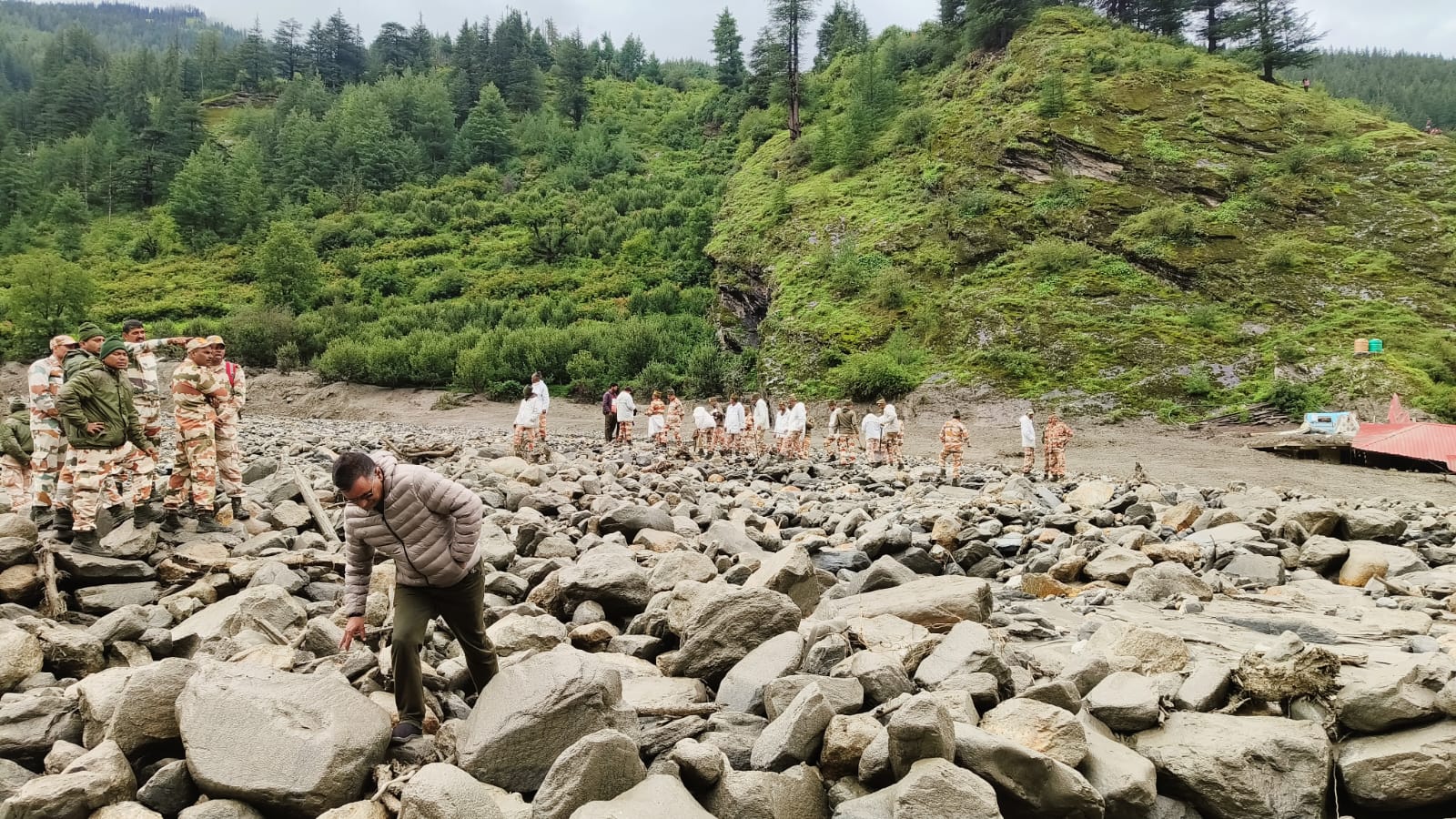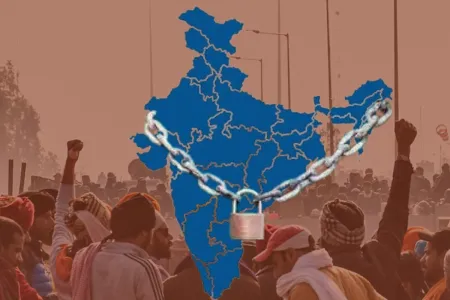Dharali Disaster: Why Cloudbursts Hit Hilly Areas and the History Behind This Tragic Village

On August 4, 2025, Dharali, a quiet and scenic village in Uttarakhand, faced a devastating cloudburst. Within minutes, water gushed down with extreme force, destroying homes, taking lives, and washing away families and their dreams.
Nature’s power showed no mercy. But after every disaster, one question remains – could this have been prevented?
Let’s explore what happened, why hilly areas suffer so often, the village’s forgotten history, and the bold questions we must ask those in power.
What Happened in Dharali?
The disaster struck early in the morning. Dark clouds gathered fast, and heavy rainfall began. It wasn’t normal rain. It was a cloudburst – intense, violent, and deadly.
- At least 4 people died
- Over 50 went missing
- Houses, trees, animals, and roads disappeared in minutes
- Entire families lost everything
Rescue operations began, but remote locations and broken roads made things difficult.
Why Do Cloudbursts Happen in Hilly Regions?

Cloudbursts happen mostly in the mountains. Here’s why:
- Fast Rising Air – Moist air moves up due to mountains, forms thick clouds.
- Narrow Valleys – Clouds get stuck and rain heavily in a small area.
- Climate Change – Warmer air holds more moisture, increasing extreme rainfall.
- Loss of Forests – Trees slow down rain. Without them, floods happen easily.
- Poor Land Planning – Weak soil and unplanned construction cause more damage.
So, it’s not just nature – human activity adds fuel to the fire.
Where is Dharali? Why Is It So Special?
Dharali is in the Uttarkashi district of Uttarakhand. It lies near Gangotri, one of the most holy places in Hinduism. The Bhagirathi River flows beside it.
It is:
- About 20 km from Gangotri
- Surrounded by snow-covered peaks
- Known for apple orchards and beans
- Home to peaceful villagers and old temples
Its natural beauty is pure. But sadly, it is also disaster-prone, and nature is now striking back.
A Village with History and Spiritual Strength
Dharali has a long spiritual past. Locals believe that ancient sages meditated here. It is close to the route of Char Dham Yatra, and some stories link it to Rishi Bhagirath, who brought the Ganga from heaven to Earth.
There are old Shiva temples, sacred rivers, and traditional wooden homes. People here have lived in peace for generations, following the ways of their ancestors.
But now, their lives are being shaken – again and again.
The Government Must Answer
After every natural disaster, we see photos, sympathy, and relief announcements. But deep inside, people are asking:
Why are early warning systems still missing in villages?
-
Why wasn’t any alert sent to the people of Dharali before the cloudburst?
Why is construction allowed in eco-sensitive zones?
-
Why are hotels, roads, and buildings allowed in areas that are clearly marked as landslide or flood-prone?
Where is the long-term plan for mountain safety?
-
Why do we only react after disasters? Where is the climate action plan for Uttarakhand?
Why are hill people always neglected?
-
If this had happened in a big city, would the response time and attention be the same?
These are not just questions – they are the truths that the government must face. Speeches are not enough. Mountain people need action, planning, and protection.
Is Tourism Causing Disasters in the Hills?
This is a serious and sensitive issue. Tourism brings money, but is it also bringing danger?
Let’s see both sides.
Benefits of Tourism:
- Boosts local economy
- Provides jobs to locals
- Promotes culture and food
But also brings problems:
- Overcrowding during tourist season
- Garbage and pollution in rivers and forests
- Illegal construction of hotels and roads
- Pressure on water, electricity, and local resources
The increase in tourists has changed the natural balance. Places like Dharali, which once had 500 people, now see thousands of vehicles and visitors during peak season.
This leads to:
- More traffic and road expansion
- Cutting trees and blasting rocks
- Flood risks due to blocked drains and weak slopes
So yes, uncontrolled tourism is a big reason why disasters are increasing. We must now ask – is the profit worth the price?
What’s Being Done Now?
After the disaster, the state government and disaster response teams are working on:
- Rescuing stranded people
- Rebuilding roads and electricity
- Setting up tents and food camps
- Announcing compensation to affected families
But the real help is not only food or money – it’s protecting their future. The government must now invest in:
- Smart weather systems
- Eco-safe construction
- Training villagers in emergency skills
- Strict tourism rules to protect nature
Conclusion: Dharali Is a Warning, Not Just a Tragedy
What happened in Dharali is heart-breaking, but it is also a warning – to us, to the government, and to society.
We must understand that nature has limits. If we push it too far, it pushes back harder. We can no longer ignore the signs-climate change is real, and the hills are crying for help.
Let us not just offer prayers-let us demand change, planning, and real care for our mountains and people.
“If we do not respect the hills, the hills will not respect us.”




